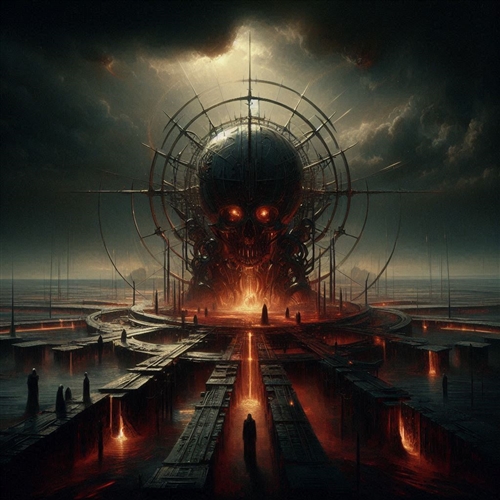


ストーリーテリングにおいて、避けられない破滅のトーンを設定することは、サスペンス、恐怖、差し迫った破局の予感の雰囲気を作り出すことにつながる。このテクニックは、ホラーやスリラーだけでなく、ドラマやコメディーでさえも普及しており、感情的なインパクトを高め、緊張感を生み出すのに役立っている。
トーン設定の主な要素
1. 視覚的手がかり
視覚的要素は、不吉な雰囲気を確立する上で重要な役割を果たします。これには、暗くて淡い色調の使用、影やシルエットの強調、腐敗や絶望の感覚を呼び起こすイメージの組み込みなどが含まれます。例えば、映画『魔女』のビジュアル・スタイルは、淡い色調、アースカラー、薄暗いシーンで、差し迫った破滅の雰囲気を効果的に作り出している。
2.聴覚的な手がかり
サウンドデザインも、トーンを設定する上で同様に重要である。不協和音、不穏な環境音、突然の静寂を使用することで、不安感や不吉な予感を作り出すことができます。ビデオゲーム『サイレントヒル2』では、歪んだメロディーと不気味なサウンドスケープがサウンドトラックの特徴で、ゲームの不穏な雰囲気を強めている。
3.物語のテクニック
物語の構成や情報の明かされ方も、破滅感の一因となります。伏線とは、これから起こる出来事について微妙なヒントや手がかりを投下することで、期待感や恐怖感を高めることができます。ジョージ・オーウェルの小説『1984年』では、主人公が繰り返し見る悪夢と、常に存在する監視が、全体主義体制が国民を最終的に支配する伏線となっている。
4.登場人物の成長
登場人物の行動や台詞は、差し迫った運命の予感をさらに強めることができる。恐怖、あきらめ、必然性の感覚を表現する登場人物は、全体の雰囲気に貢献することができる。シェイクスピアの戯曲『ハムレット』では、ハムレットの独り言が、死と人生の無益さについての思索に満ちており、劇の悲劇的で破滅的な雰囲気に貢献している。
さまざまな種類の破滅を呼び起こす
1. 個人的な破滅
これは、一個人または登場人物の小グループに影響を及ぼす、差し迫った破滅の感覚を指す。これは、登場人物の内面的な葛藤、恐怖、脆弱性を強調するサイコホラーを使うことで呼び起こすことができます。映画『ブラック・スワン』はこの手法を効果的に使い、バレエの演技で完璧を目指す主人公の精神状態の悪化を掘り下げている。
2.社会の破滅
このタイプの破滅は、社会や文明の没落に関連している。社会の衰退、政治不安、環境災害の描写を通して描かれることがある。コーマック・マッカーシーの小説『道』では、文明が崩壊した黙示録後の世界が描かれており、残された生存者は不毛で敵対的な環境の中で生き残るために奮闘している。
3.コズミック・ドゥーム(宇宙の破滅)
これは、惑星や宇宙の破壊など、宇宙規模の消滅の脅威を伴う。この種の破滅は、しばしばSFや終末論的なテーマと関連している。映画『インターステラー』は、人類が差し迫った地球の滅亡に直面し、広大な宇宙に新たな故郷を求めるという、宇宙の破滅の概念を探求している。
結論
避けられない破滅のトーンを設定することは、ストーリーテリングにおいて複雑でありながらやりがいのある試みである。視覚的、聴覚的、物語的なテクニックを巧みに用いることで、クリエイターは観客をサスペンス、恐怖、差し迫った破局への予感に満ちた世界に没入させることができる。それが個人の破滅であれ、社会の崩壊であれ、宇宙の滅亡であれ、こうしたテーマを効果的に描くことは、観客に永続的なインパクトを残し、ストーリーテリング体験全体を高めることができる。